Let’s admit this right away: While Extended Learning Time and Extended Learning Opportunities are getting lots of attention, they sometimes seem a lot like what plain-speaking people simply call after-school programs.
Basically, that’s what they are. But they are a specific type of after-school program, one that more and more program operators see as an opportunity for growth.
They are building on the continuing push to raise the performance of students through longer school days, more learning time and more creative means of engagement. Earlier this year, the American Youth Policy Forum released a study, Learning Around the Clock: Benefits of Expanded Learning Opportunities for Older Youth, that followed the efforts of 22 Expanded Learning Opportunity (ELO) programs. It found that extended days with more demanding schedules seem to provide youth with skills that help them engage in more positive behavior, feel greater independence and self-confidence, make better decisions, become more involved in their communities and improve academic performance.
They also offer a way for youth programs to connect with or deepen their relationships with schools.
What is ELO?
The definitions of ELO and Extended Learning Time (ELT) vary, and in many ways ELO programs are a form of academic-based after-school programs. But where after-school operators often stress that their programs are not fundamentally extensions of the school day, ELO programs are set up to be exactly that.
So while after-school programs vary from drop-in centers to structured daily activities, ELOs are built on a tighter structure and even have participation requirements. While more after-school programs are coordinating their activities with what children are learning in school, most ELOs are built on that arrangement.
In New York City, The After-School Corp.’s (TASC) Extended Learning Time initiative “engages students in structured activities tied to specific outcomes aligned with the school day,” says Communications Director Susan Brenna. Working in partnership with the city’s departments of Education and Youth and Community Development, TASC is piloting an extended school day at eight elementary schools and two middle schools that will extend class time for some students to 5:45 p.m. That’s about three hours after the end of the regular school day.
“After-school tends to be very loose,” says Valerie Sawinski, principal at one of the pilot sites, Junior High School 185, Edward Bleeker Junior High School in New York. “Children here are on a schedule, and we want something measurable at the end.”
Some after-school operators might balk; lots of programs are structured and measure academic outcomes. But Sawinski reflects the viewpoint of many principals, who are, of course, the key to any youth program that wants to operate in their halls.
In Massachusetts, not only are youth on a strictly defined schedule, but 26 schools that have joined the state’s Expanded Learning Time Initiative require that every student participate. “We felt this model mirrored that of high-performing private and charter schools,” says Jennifer Davis, co-founder of Massachusetts 2020, a private public-policy, research and programming organization, which sponsors the initiative, and president of the National Center on Time & Learning. Massachusetts 2020 has basically added 300 hours of classroom instruction a year for each student.
In other instances, ELO is not quite so clearly defined. Girls 2000, an ELO program in San Francisco, is run by Hunters Point Family, a community-based youth development agency, and has no direct relationship with any school; it’s located in public housing developments.
“That’s where the kids live,” says Girls 2000 founder Lena Miller. “That’s where the need was. We wanted to promote a family and community atmosphere.”
“ELO is not about time or location,” says Janice Hastings, vice president of programs and resource development at PlusTime New Hampshire, an after-school program provider that has helped launch an ELT pilot project at four schools in New Hampshire. “It can take place during school, after school, on weekends, on nights. It’s not a program; it’s a learning experience.”
Essentials
Among the elements that participants cite as crucial to success:
• Partners – “This is not an easy process,” says Davis of Massachusetts 2020. “A typical nonprofit or local organization cannot take this on.”
TASC President Lucy Friedman says partnerships with community-based organizations (CBOs) are essential. And she believes the school has to be the leader.
Working with TASC has allowed schools in New York to avoid spending a lot of new money to run their ELO projects. “Adapt the after-school funding streams you already have to ELO,” TASC’s Brenna says.
• Creative staffing – ELO program coordinators say that finding staff to fill the needs of an extended day isn’t as hard as one might expect. Sean Davenport, principal of Thurgood Marshall Academy Lower School in New York, has about half of his teachers participating in ELT, along with a site coordinator from his CBO, some AmeriCorps workers, a couple of parents and activities specialists as needed.
“I hired teachers to do my ELT because I wanted people teaching who already knew where the kids are in school,” he says.
• Transportation – “Transportation is the biggest impediment” to youth participation, says Sawinski at Edward Bleeker in New York. She says many students who want and need to participate in ELO at her school can’t, because they need to ride the school bus home when the traditional school day ends in mid-afternoon.
That’s why Girls 2000, an ELO program in San Francisco, uses its own van to take program participants home at the end of the day. “You can’t put kids on the public bus system,” says Girls 2000 founder Lena Miller. “It isn’t safe. If you have an extended learning program, providing transportation should be mandatory.”
Resource: Learning Around the Clock: Benefits of Expanded Learning Opportunities for Older Youth, http://www.aypf.org.
Garfield Middle School
Revere, Mass.
(781) 286-8298
http://www.revereps.mec.edu/Schools/GARFIELD
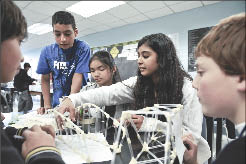 |
|
Bridge to Achievement: Now that youth are in the classroom for long periods of time at Garfield Middle School, hands-on projects like this one keep students engaged.
Photo: John Gillooly |
The Strategy: Lengthen class times to allow more depth and creativity in traditional classes. The approach is different from many other ELOs, but is a possible model for any large-scale replication of extended learning programs.
Getting Started: This is the second year of the extended learning day. The school applied to participate in the Massachusetts ELT initiative after surveys of staff, students and parents showed support for the idea.
How It Works: Each class period was extended from 47 minutes to 60 minutes, and electives were added to the school curriculum, including three foreign languages, robotics, computer animation, Web design, architecture and swimming. The school makes use of a variety of community partners: a local architecture firm works with the architecture class, and Citizen Schools helps sixth-graders with tutoring and business apprenticeships. Originally Citizen Schools was Garfield’s after-school provider, but now the organization works as the school’s CBO partner in providing enrichment for the ELT day. The school day runs until 4 p.m.; it used to end at 2:20 p.m.
Youth Served: The entire student body of 430 students, grades 6 through 8, participates.
Staff: The school’s entire staff, including 40 teachers, participates, and each staff member receives additional salary for working the extended day.
Money: The program is funded through the state budget. Principal Patricia Massa says the additional cost per pupil is about $1,300.
Results: Massa says there are no official results yet with regard to the impact on test scores, although preliminary results on English language show an increase over previous years. “The teachers feel overall that students are taking more ownership in their learning,” Massa says.
Girls 2000
Hunters Point Family
San Francisco
(415) 822-8895
http://www.hunterspointfamily.org
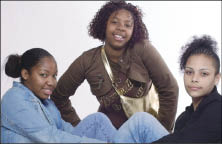 |
| Photo: Girls 2000 |
The Strategy: Give girls in public housing an opportunity to continue learning in their own environment after school, while providing an alternative to the dangers of the street.
Getting Started: Girls 2000 began in 1997 as an after-school and summer program founded by Lena Miller, who also founded Hunters Point Family. She added the Girls 2000 program to Hunters Point Family’s array of youth and community service programs serving the Bayview Hunters Point district of San Francisco.
How It Works: Girls usually arrive between 2 p.m. and 4 p.m.; the program runs until 8 p.m. each weeknight. They take classes in such areas as healthy cooking, film projects, arts, critical thinking and life skills, with the schedule changing each quarter. They also participate in recreational activities such as roller skating outings and Friday night movies.
The program also runs a fruit delivery business that operates in partnership with a fruit delivery business owner in downtown San Francisco, which supplies them with organic produce to sell to residents of Hunters Point.
Youth Served: About 50 girls, ages 10 to 18, participate on a regular basis. All are residents of Hunters Point.
Staff: A program director and two case managers.
Money: The program’s annual budget is $220,000. Funding originally came from the San Francisco Department of Children, Youth and Their Families and the Juvenile Probation Department; now it comes from the city’s Violence Prevention Plan and the Horizons Foundation.
Results: Miller says the average girl stays with the Girls 2000 program for 5.3 years, and 85 percent of program participants go on to pursue post-secondary education. She says San Francisco’s evaluation of the program in December 2008 showed a GPA increase among participating girls of 0.65 point and a 54 percent reduction in truancy.
PlusTime NH
Concord, N.H.
(603) 856-8837
http://www.plustime.org
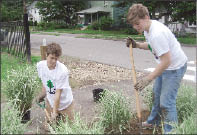 |
|
A Major Plus: Students at PlusTime high schools can get credit for internships and projects done off school grounds.
Photo: PlusTime NH |
The Strategy: Expose students to the world outside of school with expanded learning opportunities through internships, virtual learning and independent study, mostly off-site.
Getting Started: Four high schools in New Hampshire were selected to pilot the state’s first ELO program. All of them already had 21st Century Community Learning Centers, meaning they had a developed infrastructure with community partners. The first ELO programs were launched in spring 2008.
How It Works: Students can receive credit for the work they do during the extended day. Also, ELO does not necessarily occur in the afternoon after school, but may take place during the regular school day, evenings and weekends, depending on the student’s course of study and personal needs.
All ELO courses of study are overseen by a school teacher, who is responsible for awarding credit. For example, one youth is taking karate and studying Japanese. He receives virtual instruction from a Japanese language teacher in Boston (and meets with the teacher monthly) and talks with students in Japan using Skype, a software application for making free and reduced fee calls over the Internet.
“About 80 percent of ELO [courses] are born from students’ interests and passions,” says Melissa Gallagher, PlusTime’s ELO manager and community development specialist. PlusTime helps schools connect with community partners who can provide learning experiences in the students’ areas of interest.
Youth Served: 500 students from one urban and three rural high schools. Fifteen to 20 percent of students at each school participate.
Staff: Each high school is served by an ELO coordinator provided by PlusTime, while the teachers are generally staff members of the schools. All teachers receive stipends.
Money: Each of the four pilot ELO sites receives $85,000 per year through a grant from the Nellie Mae Education Foundation. PlusTime provides support services, including professional development meetings for staff, ELO site coordinators, some teachers, performance assessment and recruitment strategies.
Results: To date, 53 percent of ELO students have received school credit for their work. Janice Hastings, vice president of programs and resource development for PlusTime, says some students would not have graduated without the credits they received through ELO.
Thurgood Marshall Academy Lower School
New York
(212) 368-8710
http://schools.nyc.gov/SchoolPortals/05/M318
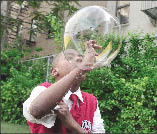 |
|
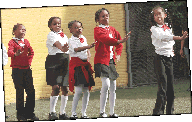
For three hours after each school day, Thurgood Marshall students get a healthy dose of homework help and outside-the-box learning projects.
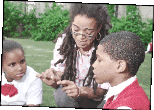
|
The Strategy: Give elementary school students additional help by offering after-school classes and workshops in science, reading and the arts, with content that expands on what they are learning in their regular classrooms.
Getting Started: This program began last school year as an ELT pilot project of TASC. Like all of TASC’s New York City pilot projects, this ELT is run by the school’s principal. The Abyssinian Development Corp. (ADC) partners with the school and provides the ELT site coordinator, who works with the principal in implementing and overseeing the program.
How It Works: The ELT day begins at 2:50 p.m. and runs until 5:45 p.m. Participants get 40 minutes of homework time, during which they can go to the classrooms of assigning teachers for help. They then have an hour to participate in extended classroom time, which might focus on science or reading. In Science Plus, for example, children work on lab experiments that they wouldn’t have time for in the normal school day.
In contrast to regular classes, during ELT, students in different grade levels often work together on projects, creating a greater sense of community at the school. Children are not graded on their ELT work.
The day ends with enrichment activities, including tap dance, chorus, African dance, yoga, meditation and art. The activities reflect the school’s position as an arts school and are generally taught by activity specialists from outside the school.
Youth Served: 115 of the school’s 180 students in kindergarten through fourth grade.
Staff: 16 to 18 staff members, about half of whom are teachers. More than half of the school’s teachers participate; they receive stipends for the work.
Money: Marshall’s ELT budget last year was $196,000. About 15 percent of funding comes from the school, with the remainder provided by ADC, a service organization that helped found and fund the arts school and supports numerous other projects in the Harlem section of New York.
Results: There are no official results yet. Principal Sean Davenport says he sees changes: “I see students taking more ownership in their school. They’re more accountable for their actions.”
Davenport says preliminary reports show that test scores have improved for about 80 percent of ELT students, particularly at the fourth-grade level.































